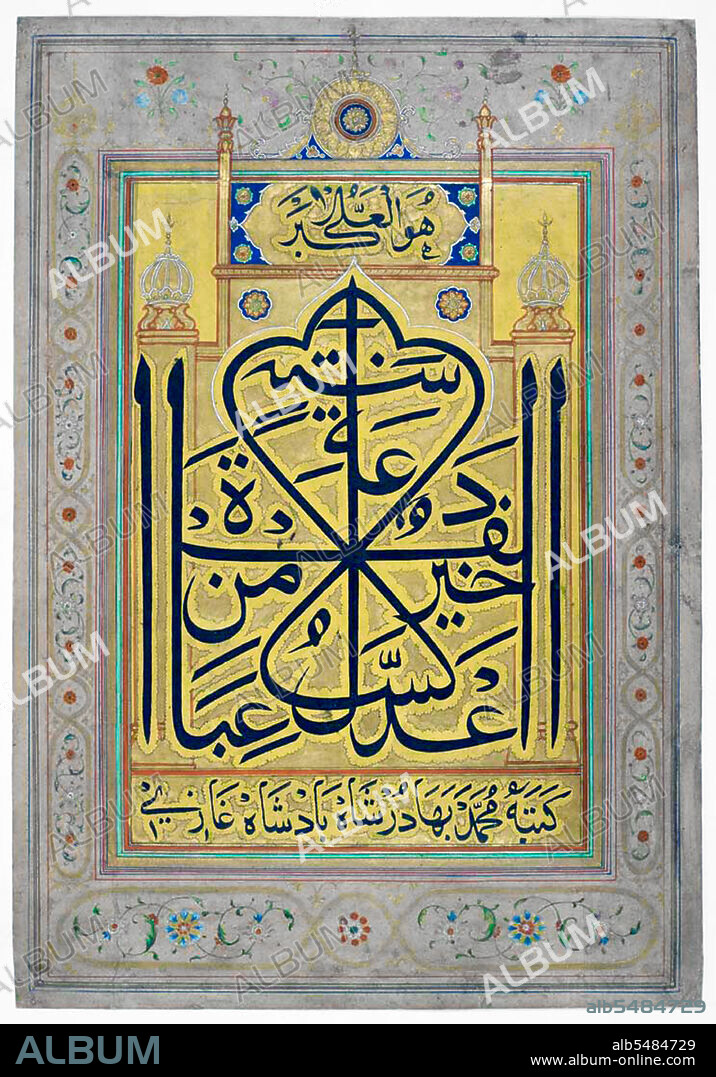alb5484729
Arabic calligraphy of Bahadur Shah Zafar, the last Mughal Emperor.

|
Zu einem anderen Lightbox hinzufügen |
|
Zu einem anderen Lightbox hinzufügen |



Haben Sie bereits ein Konto? Anmelden
Sie haben kein Konto? Registrieren
Dieses Bild kaufen.
Nutzung auswählen:

Titel:
Arabic calligraphy of Bahadur Shah Zafar, the last Mughal Emperor.
Untertitel:
Siehe automatische Übersetzung
Bahadur Shah II, born Abu Zafar Sirajuddin Muhammad Bahadur Shah Zafar, in October 1775 died November 7, 1862) was last of the Mughal emperors in India, and ruler of the Timurid Dynasty. He was son of Akbar Shah II and Lalbai, who was a Hindu Rajput. He became Mughal Emperor when his father died on September 28, 1837. He was widely known as Bahadur Shah Zafar. Bahadur Shah Zafar was a noted Urdu poet, and wrote a large number of Urdu ghazals. While some part of his opus was lost or destroyed during the Indian Rebellion of 1857, a large collection did survive, and was later compiled into the Kulliyyat-i-Zafar. The court that he maintained, although somewhat decadent and arguably pretentious for someone who was effectively a pensioner of the British East India Company, was home to several Urdu writers of high standing, including Ghalib, Dagh, Mumin, and Zauq.
Bildnachweis:
Album / Pictures From History/Universal Images Group
Freigaben (Releases):
Bildgröße:
3500 x 5005 px | 50.1 MB
Druckgröße:
29.6 x 42.4 cm | 11.7 x 16.7 in (300 dpi)
Schlüsselwörter:
ASIEN • ASIEN, KONTINENT • GEMAELDE • GESCHICHTE • INDIANER • INDISCH • ISLAM • ISLAMISCH • KAISER • KALLIGRAPHIE • KOENIG • KONTINENT, ASIEN • KUNST • KÖNIG • MALEREI • MOGUL KULTUR • MOHAMMEDANER • MOHAMMEDANERIN • MONARCHIE • MOSLEM • MOSLEMIN • MUSLIM • MUSLIMIN • ZEITGESCHICHTE
 Pinterest
Pinterest Twitter
Twitter Facebook
Facebook Link kopieren
Link kopieren Email
Email
